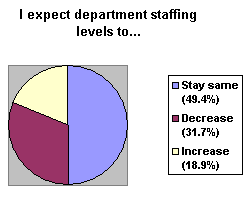Though the broader economy is showing signs of picking up, a survey of drug company execs suggests that the era of pink slips continues to bedevil the pharma industry. PharmaIQ’s “The Big Pharma Recession Report” found that 44% of pharma employees are worried about losing their jobs.
Sales and marketing might appear to be under strain, considering events like AstraZeneca’s announcement that it was slashing 24% of its US sales force.
Yet PharmaIQ’s report shows this may not be the most hazardous spot within the industry’s employment landscape: 35% of respondents said they expected their companies to invest even more in their marketing forces, 35% expect it to stay flat, and 30% think it will be reduced.
The key to unlocking the seemingly mixed messages of sales investment and downsizing depends on a drug’s age. A newer drug with a longer patent life may receive the equivalent of concierge-like sales attention, while an arm’s length approach may be applied to older drugs which are at the end of their patent cycles.
Nexium is a perfect example of this type of downshift. AstraZeneca eliminated practically all detailing by 2009 and replaced in-person sales calls with a call center. The company said during its February sales call this “resource substitution for sales force support for late lifecycle products” has been a success and will be part of its regular business strategy.
Bristol-Myers Squibb also explored this sales space in 2005 when it scaled back its Pravachol support and limited in person sales calls to current prescribers as patent protection timed out.
Research and development was among the report’s top ROI-stressed divisions, and noted that it costs just over $1 billion to bring a drug to market – a 21% leap from the almost bargain price of $830 million just two years ago. The report shows an increased focus on conducting clinical studies closer to growing markets, particularly Asia, whose pharma industry relatively insulated from the flood of job losses in the US and Western Europe.
The study highlights additional support for the less-is-more strategy: 60% of employees who were working in downsized departments said the same amount of work was being done by fewer people.








